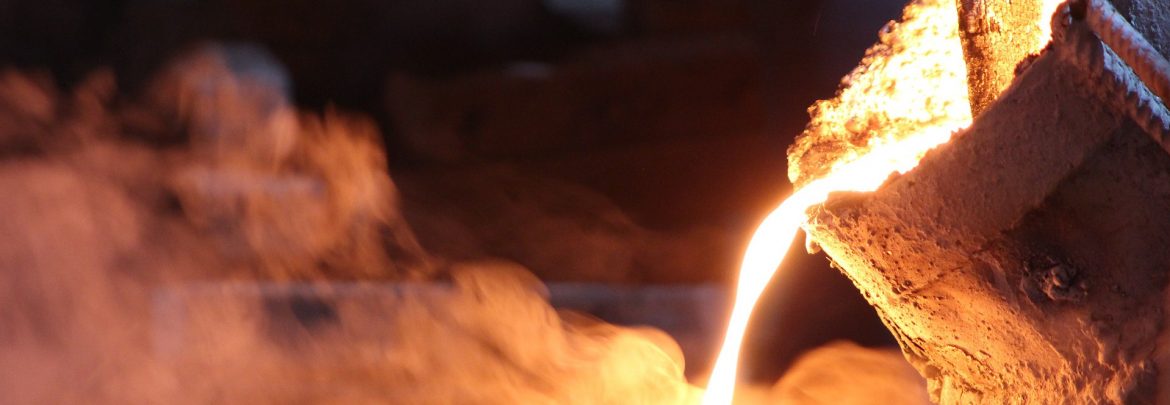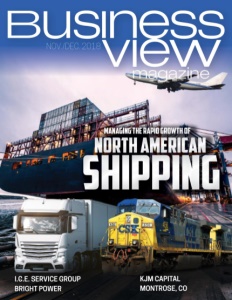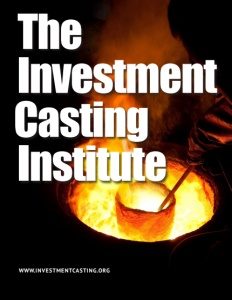The Investment Casting Institute
Strength in collaboration
Business View Magazine interviews Joseph Fritz, Executive Director of the Investment Casting Institute as part of our focus on the sector.
Established in 1953, the Investment Casting Institute (ICI) is a 501 c(6) manufacturer’s trade association, whose primary mission is to promote the investment casting process, as well as collecting and disseminating information about the industry and providing education opportunities to its members. While the majority of the Institute membership comes from North America, membership also includes investment casters and suppliers from throughout the world, representing virtually every continent.
Recently, Business View Magazine spoke with the ICI’s Executive Director, Joseph Fritz, to learn more about the organization and the industry it represents. The following is an edited transcript of that conversation.
BVM: What is investment casting?
Fritz: “Investment casting is one of the oldest metal forming technologies. It was originally founded either by the Chinese or the Egyptians, who were working to form artwork, statues, and so forth out of beeswax, then building a ceramic shell around the wax, melting the wax out, and then backfilling with whatever metal they were working with; in many cases with the Egyptians, it was gold.
“For thousands of years, investment casting was exclusively an art form; you see investment castings everywhere in town squares, in churches, in synagogues, usually for artwork and busts. But with the evolution of the jet engine in World War II, the need arose for a metal forming technology that could create very specialized shapes and forms, such as jet turbine blades, and, in many cases, with highly-reactive alloys. That’s where the true need for productionizing the investment casting process came from.”
BVM: How did the Investment Casting Institute come about?
Fritz: “The Investment Casting Institute is 65 years old. It was formed by a number of entrepreneurs from all over the United States who were working in this field and trying to find other applications. Everybody was doing their own development and the industry, at that time, felt that, through collaboration, and through sharing ideas and initiatives and working together, this fledging industry could be directed in such a way that it could experience significant growth, which, in fact, it did.
“Since that time, investment casting has not only supported, and flourished with, the aerospace industry, it also has a very strong position in power generation, in automotive, and in a wide variety of industrial applications, including oil and gas exploration, drilling, food processing, recreational vehicles, sports equipment, orthopedic implants, medical equipment, and a variety of other things.”
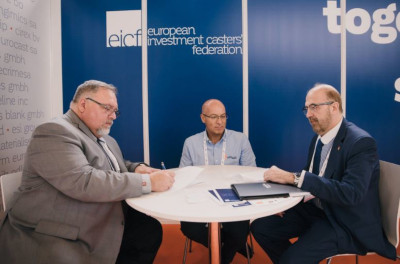 BVM: Who makes up Investment Casting Institute’s membership?
BVM: Who makes up Investment Casting Institute’s membership?
Fritz: “The ICI is comprised of foundries – the folks who are actually pouring the metal – and suppliers to the foundries – the people that manufacture the metals, the alloys, the waxes, the ceramics, the refractories, and the equipment to support the process.
“We have four categories of members: we’ve got Regular members, which are North American foundries. We have Affiliate members, which are North American suppliers that are made up of direct material suppliers, equipment suppliers, and consultants. Then, we have Associate Regular members, which are non-North American foundries. And we have Associate Affiliates, which are non-North American suppliers.
“We currently have approximately 275 member companies, internationally, that are involved with the ICI. We don’t have individual memberships, per se; any individual members are honorary members or alumni members. Alumni members are people who have worked in the industry and want to stay involved. They pay a nominal fee to get our magazine and membership discounts if they want to come to one of our events. Honorary members are those individuals who we see to be a great value to the industry; they are retirees and they get the same rights as alumni, they just don’t have to pay for it. These people work on committees and help drive things forward in their retirement.”
BVM: How do you explain the benefits of membership when talking to prospective member companies?
Fritz: “When you’re doing that, you’re in a sales role, and to be a good salesman, you need to understand your potential customer; you need to understand what their needs are and take your strengths and position them against their needs. So, for example, if I’m talking with a smaller company, somebody that might not have all the resources or the buying volumes to get the best pricing, I take the time to share with them how they can take advantage of a lot of our member programs that would provide them discounts on things that they need to run their business.
“We’re not talking about direct materials here, but we might be talking about office equipment, for example; we might be talking about discount travel programs; we might be talking about discounted programs through various freight and shipping companies that we have arrangements with – ways that we can help a company reduce its costs. Additionally, these companies typically don’t have as advanced technologies as the larger organizations. So, we try to address the areas that they’re trying to grow into. We’ll discuss training and support organizations; we highlight our technical resources and the free counsel that our technical committee offers people. If they’re having a problem with a process, they can come to us and we will respond to them after a panel of experts has reviewed their situation. So, you try to highlight the things that that company may derive benefit from. That’s a key element.
“On the other hand, you might be talking to a very large company that has all the resources it needs, and, quite frankly, may not need a group like the Investment Casting Institute. The approach with somebody like that might be very different. We have the largest manufacturers in the industry as members and if you were to talk with them, they might say, they don’t ‘need’ the ICI, but they’re members because it’s how they give back to the industry – like working with elementary and high school students, trying to instill an interest in manufacturing and the investment casting process. They’ll talk about engineering and try to get people excited. We work with colleges, and we offer scholarship programs for students who do internships. And a lot of the larger companies work with us for these types of programs. So, it’s more out of the humanitarian need to give back to the community that we’ll see a lot of these larger companies get involved.
“They also know that we help educate their customers; we bring customers to the industry, people who might be buying forgings, precision machinings, fabrications, and show them that they can make similar or identical products with the investment casting process, quite often reducing their overall manufacturing costs. So, we do a lot of education of the potential customer at various trade shows. In fact, we run the world’s largest trade show dedicated to the investment casting industry. And that is done in conjunction with a three-day, technical symposium where we have engineers from all over the world who come to learn about advances in various aspects of the technology. So, we do a lot of educating.”
BVM: Can you talk about Investment Casting Institute’s staff, and what they do?
Fritz: “I have five direct reports, so if you count me, there are six people on the Investment Casting Institute payroll. The ICI has four staff members and our wholly-owned subsidiary, INCAST Magazine, has one staffer, Erin Almaleh, who is our Editor and is responsible for our monthly publication. We publish the world’s only magazine dedicated to the investment casting industry.
“On the Investment Casting Institute side, Grace Albanese is my Business Administrator. She helps me deal with the internal workings of the ICI, when it comes to such things as human resource needs, supervision; she addresses our insurance needs; she deals with the facilities where we lease our office space; and she is there to give guidance to the other employees, as well as support them.
“The next person is our Meeting and Events Planner, Barbara Tiseo. She runs our two main events – we have a spring management meeting, typically held two weeks after Easter, every year. That is a three-day management seminar, usually held at a desirable location; we try to alternate between east coast and west coast. This past year, we were in Sonoma, California; the prior year, we were in Charleston, South Carolina; and before that, in Tucson, Arizona. Next year, we’re going to be in Puerto Rico, and the year after, we’re going to be in Santa Fe, New Mexico. We try to hold these events in areas where people can relax, unwind, and get away from the daily grind, but get some learning on top management topics that are applicable to the needs of the industry. We hear about the economy, what’s happening domestically and internationally; we go over market trends for the various industries that we serve; we look at labor law and legal issues – what’s happening at OSHA and the EPA; also topics that are current, like sexual harassment, dealing with workplace disruptions; we really try to cover the top management topics like cybersecurity. And we have motivational speakers.
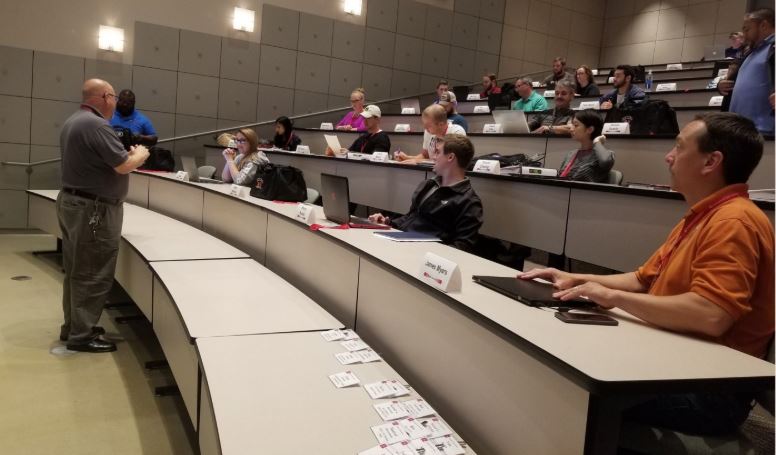
“Then, there’s our big event, which is our annual conference and exposition. Our 65th event will be held, this October, in Kansas City, Missouri. Last year, we were in Covington, Kentucky, and we typically hold those events where the majority of our members can get to without having to take a flight. So, we don’t go to the peripheries of the country in a resort type setting. This is a real down and dirty, hard-working, talking technology type meeting, as well as a significant trade show. And Barbara coordinates all that. She also coordinates our training and education programs. We have the industry’s only certification program, where people in the investment casting industry can be certified for the skill sets necessary to be successful. We have process control courses and various other programs, which change from time to time. We have regional meetings which are also training type seminars. Barbara coordinates them as well, and she handles all of our industry surveys.
“Nora D’Ambra is our Marketing and Member Services Coordinator. She works very closely with INCAST Magazine as well as with the Investment Casting Institute, doing our monthly newsletter, supporting all of our social media functions and data bases, and she coordinates and runs all of our member discount programs.
We have bookkeeper by the name of Margureta Watson. We are very careful about what we do with the industry’s money, because we view the money in our care as belonging to the industry. We are audited every year and Margureta makes sure we are upright and squeaky clean.”
BVM: Is advocacy a priority for the Investment Casting Institute?
Fritz: “It isn’t. We try to stay apolitical. We do have a government affairs committee and we do work with another trade association that does advocacy. We won’t promote candidates or positions. However, we work very hard to make sure that our members are advised of key factors affecting our business. If there’s a topic of importance, we might publish an article about it; we might hold a webinar on it; so, we would share the information. We do not lobby, but we do believe we have an obligation to keep our members informed and to support them in having their voices heard. We participate annually in a visit to Washington to meet our representatives with this other trade association that we work with. They have an annual meeting on the hill and we always send a representative to that. But, again, we don’t do any lobbying or advocacy.”
BVM: Going forward, what does the landscape look like, in general, for the investment casting industry?
Fritz: “The answer to how it looks is different with almost every product type. For example, if we’re looking at aerospace, we see a very strong, healthy, high-growth future. The same is true for automotive. Then, you get to the low end of industry – product that doesn’t have the high-stress, high-temperature demands; things like additive manufacturing are becoming a disruptive technology, with people printing metal parts to meet their needs. For the most part, we see additive manufacturing as a key enabler to help us prototype and get to production faster, and we’ve been using it year after year to become faster and more responsive to our customers’ needs to the point that we’ve got additive manufacturing and 3D printing integrated into many of our manufacturing operations.
“There’s a lot of money being invested to try and develop that technology for higher-end products. But, quite frankly, 3D printing can’t replace the high-end capabilities of the industry, because not only are you forming a metal part, but it’s the metallurgical structure that is key and critical to a number of applications. You may have a part that is grown out of a single crystal of metal – one grain. Metal breaks along grain boundaries, so if you can make it out of one grain, you don’t have grain boundaries and you have a very strong, durable part. These are the types of components that end up in the first and second stage of your jet turbine engine; you want to have high-end technology supporting these applications where lives depend on them. And you can’t print a single crystal part; in effect, you’re creating a part with many small grains or crystals, rather than having one single crystal that you’ve grown through a manufacturing process. So, that high-end technology is safe and secure.
“We’re also seeing new development in alloys – higher temperature, more durable alloys. We’re seeing advances in better dimensional controls. We have foundries that can maintain tolerances of plus or minus two or three thousands of an inch on product. Leaps and strides have been made over the past 20 years and we expect to see further development as time goes forward. The key thing is controlling and consistently getting those results.
“We’ve also seen companies reducing scrap or improving yield and producing fully-conforming product to their customers’ drawings with regular consistency. We’re seeing a lot of good movement in that direction. In fact, we’re currently in the process of developing a process control certification program, where a foundry can be certified at various levels, indicating that they have certain levels of process controls in place, which is a tremendous selling point when talking to customers, but more importantly, it provides a roadmap to self-improvement. If somebody can say, ‘We’re gold-certified in Investment Casting Institute process control standards,’ that will say an awful lot.”
BVM: Can you sum up the character and mission of the Investment Casting Institute for our readers?
Fritz: “We’re a member-run trade association that is in tune with the industry, its current and future trends. We work, not only with the manufacturers in the industry, but with the OEMs, the people who are buying the castings, the forgings, the fabrications. We are the voice of the industry; although we are not an advocacy group, we are often contacted by government agencies to advise them on our positions on things. Our focus is on educating, growing, and establishing a clear path for the industry to go forward and to prosper.
“We bring people together and our members do help each other. If you ask any one of our active members what’s the number one thing they get from the Investment Casting Institute, they will tell you it’s the networking opportunities, the people they meet at the trade shows, the opportunities for collaborative events and programs. We’ve done collaborative work with other trade associations; we’ve done collaborative work with universities. We’re currently formalizing a collaboration portal, where our members can reach out to each other, to work with each other to drive the industry forward.
“We try to stay in tune with the needs of the industry, and put systems and programs in place to meet or surpass the needs of our members, and to help people fix problems that they’ve come across in the past, deal with the current issues, and step comfortably into the future.”
Check out this handpicked feature on The Steel Tank Institute / Steel Plate Fabricators Association.
AT A GLANCE
WHO: The Investment Casting Institute
WHAT: A manufacturer’s trade association
WHERE: Montvale, New Jersey
WEBSITE: www.investmentcasting.org
